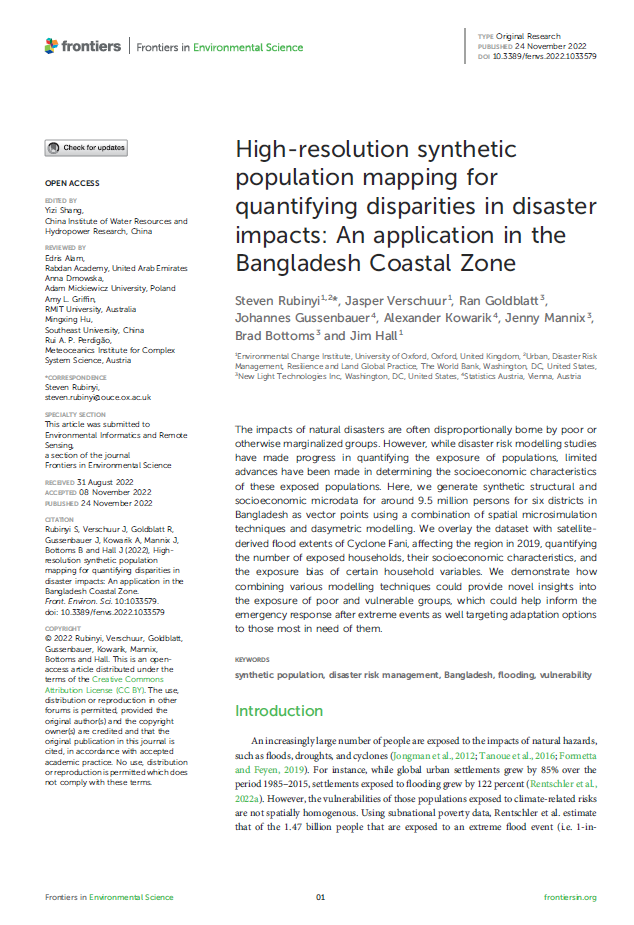Authors: Steven Rubinyi, Jasper Verschuur, Ran Goldblatt, Johannes Gussenbauer, Alexander Kowarik, Jenny Manni, Brad Bottoms, Jim Hall
The impacts of natural disasters are often disproportionally borne by poor or otherwise marginalized groups. However, while disaster risk modelling studies have made progress in quantifying the exposure of populations, limited advances have been made in determining the socioeconomic characteristics of these exposed populations. Here, we generate synthetic structural and socioeconomic microdata for around 9.5 million persons for six districts in Bangladesh as vector points using a combination of spatial microsimulation techniques and dasymetric modelling. We overlay the dataset with satellite-derived flood extents of Cyclone Fani, affecting the region in 2019, quantifying the number of exposed households, their socioeconomic characteristics, and the exposure bias of certain household variables. We demonstrate how combining various modelling techniques could provide novel insights into the exposure of poor and vulnerable groups, which could help inform the emergency response after extreme events as well targeting adaptation options to those most in need of them.

